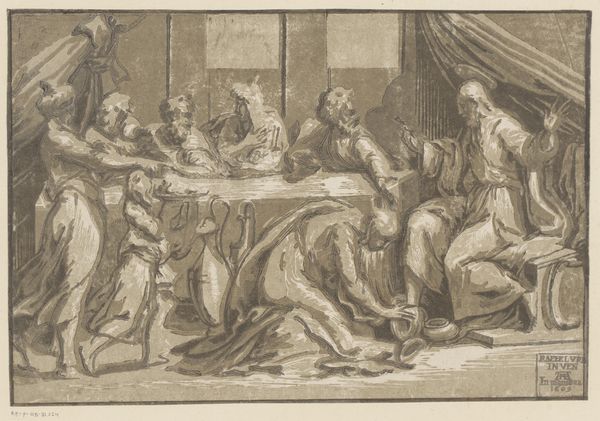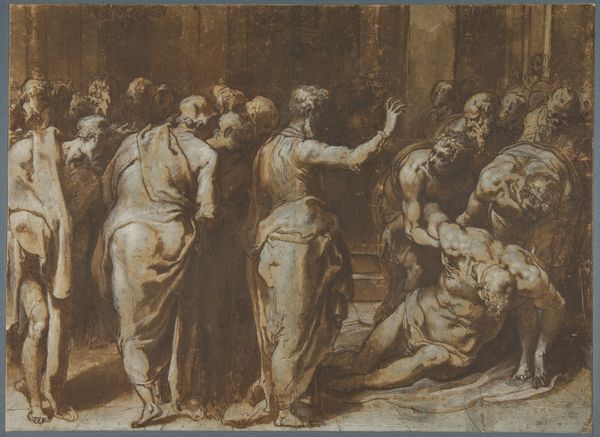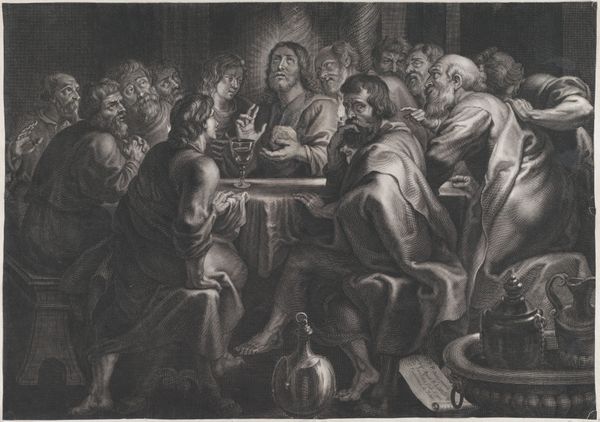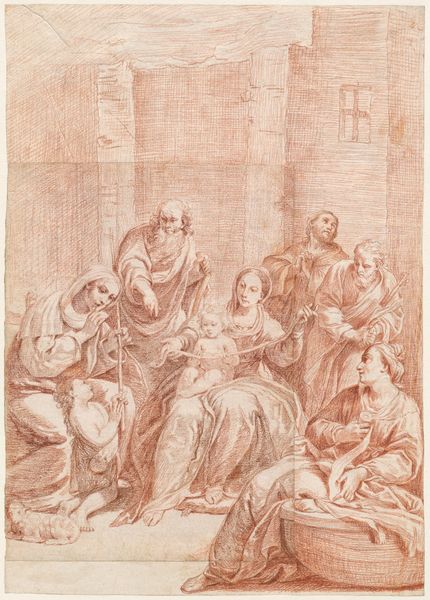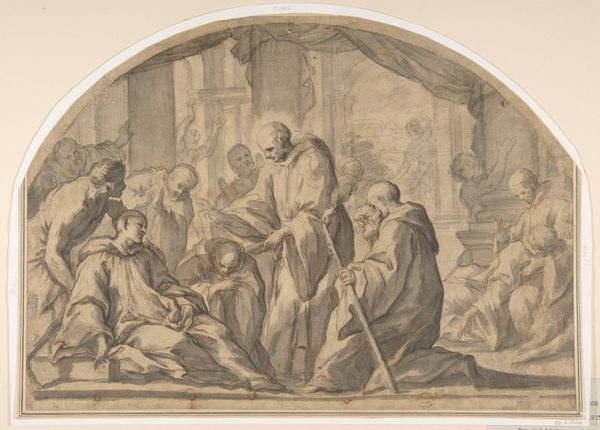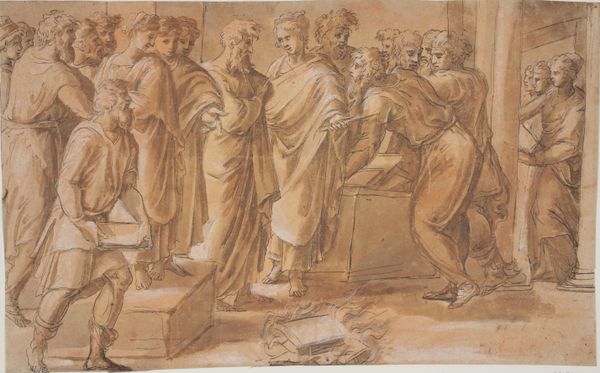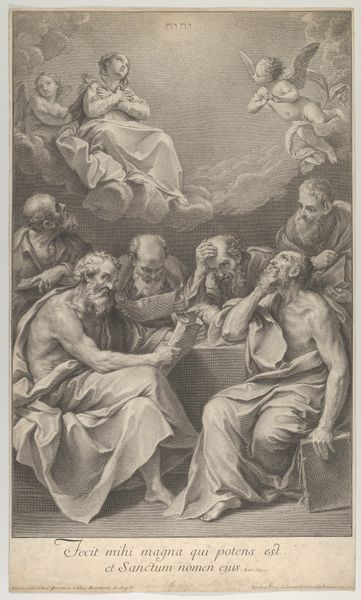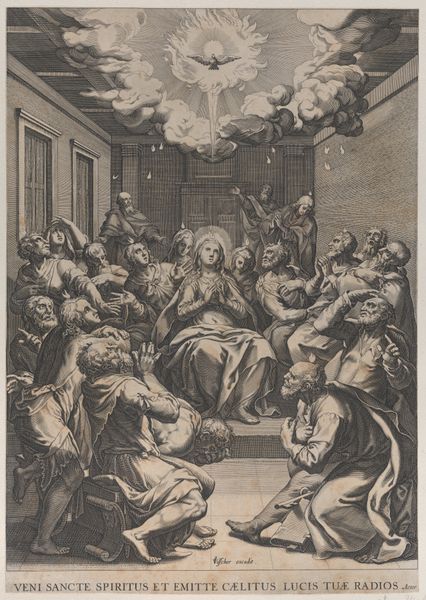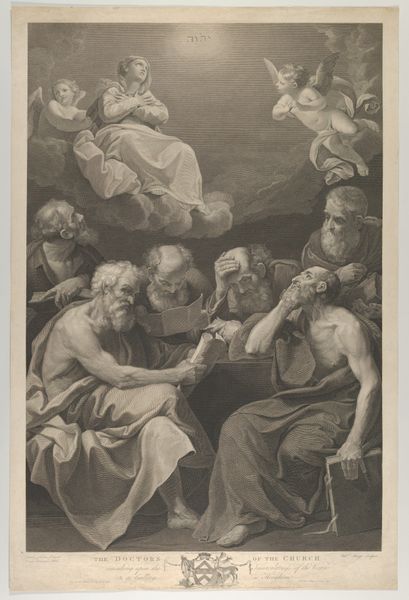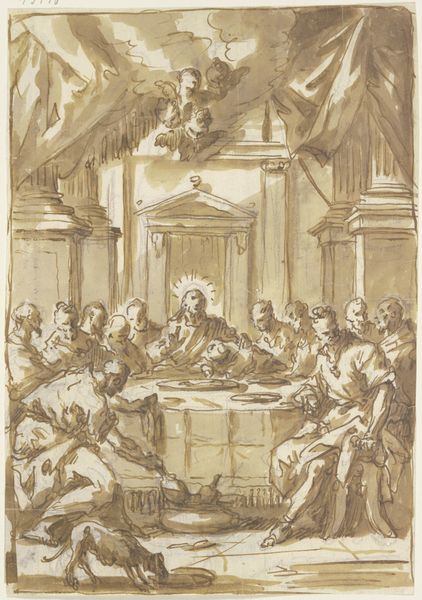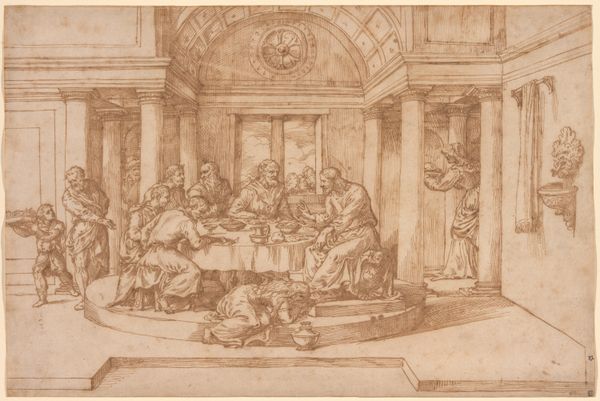
painting, oil-paint
#
narrative-art
#
painting
#
oil-paint
#
mannerism
#
figuration
#
oil painting
#
history-painting
Dimensions: 23.5 cm (height) x 30 cm (width) (Netto)
Editor: Girolamo Muziano’s "The Last Supper," created sometime between 1547 and 1592. The painting, made with oil, depicts a very dramatic scene; it's almost theatrical. I notice that everyone is in motion, gesturing wildly. How do you interpret this work and its enduring appeal? Curator: This painting pulsates with coded emotion. It is a loaded image. The Last Supper is immediately recognizable; however, I look at it beyond the depiction of a familiar historical event. It becomes a container holding shared cultural memories related to sacrifice and betrayal. How do those themes resonate through time? Editor: That's interesting. So, it's not just about the biblical story but about universal human experiences? I'm looking at how figures recoil in apparent denial when Christ says one of them will betray him. I find myself thinking about betrayal I've experienced in my own life. Curator: Exactly. Notice, too, the light radiating from Christ. What does that tell you about Muziano's intention and how it ties into Christian symbolism and ideas about the divine? Is the symbolic importance immediately understandable or does the painting expect the audience to decode its visual messaging? Editor: It is difficult. While Christ is at the very center, the naturalistic reactions of the people around the table steal some focus, distracting you from the religious symbolism. Their gestures of shock create many lines that take you all over the scene. It’s certainly not a typical Renaissance painting in its composition! Curator: Right. The artist places emphasis on the charged moment of human reactions to capture our imagination beyond the religious meaning of that night. We find a lasting source for contemplation about relationships, truth, and deception. Editor: I never thought about religious paintings in quite this way. Thank you for opening my eyes to seeing art as a carrier of our historical baggage and beliefs! Curator: My pleasure! Thinking about images as storehouses of cultural significance transforms how we look and understand art.
Comments
No comments
Be the first to comment and join the conversation on the ultimate creative platform.

